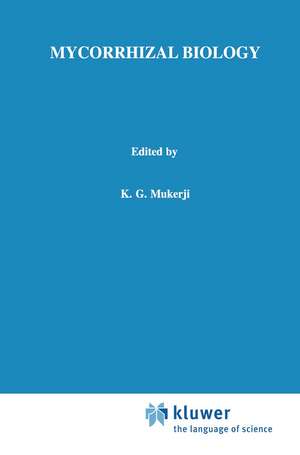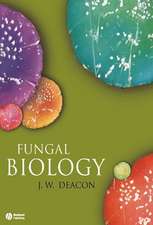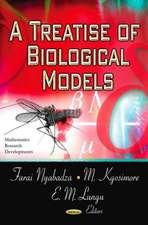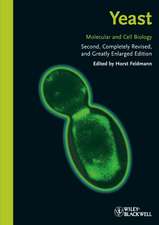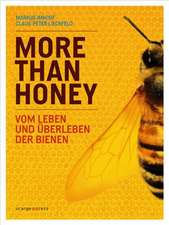Mycorrhizal Biology
Editat de K.G. Mukerji, B.P. Chamola, Jagjit Singhen Limba Engleză Paperback – 23 oct 2012
Mycorrhizal Biology addresses the global problem of land degradation and the associated loss of soil productivity and decline in soil quality caused by exploitative farming practices and poor management in developing countries, and the far reaching socio-economic and ecological consequences of its impact on agricultural productivity and the environment. In the light of a need for sustainable development, a new system of productive agriculture, to ensure the efficient management of agricultural inputs for long term high crop productivity with minimum damage to the ecological and socio-economic environment is essential. The management of mycorrhizal fungi will form a significant part of such a system and this work investigates the key association of plant roots with mycorrhizal fungi, known to benefit plants under conditions of nutritional and water stress and pathogen challenge and analyses the developments in our understanding of the genetic loci that govern mycorrhiza formation.
| Toate formatele și edițiile | Preț | Express |
|---|---|---|
| Paperback (1) | 947.18 lei 6-8 săpt. | |
| Springer Us – 23 oct 2012 | 947.18 lei 6-8 săpt. | |
| Hardback (1) | 952.40 lei 6-8 săpt. | |
| Springer Us – 30 apr 2000 | 952.40 lei 6-8 săpt. |
Preț: 947.18 lei
Preț vechi: 1155.11 lei
-18% Nou
Puncte Express: 1421
Preț estimativ în valută:
181.26€ • 196.83$ • 152.26£
181.26€ • 196.83$ • 152.26£
Carte tipărită la comandă
Livrare economică 22 aprilie-06 mai
Preluare comenzi: 021 569.72.76
Specificații
ISBN-13: 9781461369158
ISBN-10: 1461369150
Pagini: 352
Ilustrații: XII, 336 p.
Dimensiuni: 155 x 235 x 18 mm
Greutate: 0.49 kg
Ediția:Softcover reprint of the original 1st ed. 2000
Editura: Springer Us
Colecția Springer
Locul publicării:New York, NY, United States
ISBN-10: 1461369150
Pagini: 352
Ilustrații: XII, 336 p.
Dimensiuni: 155 x 235 x 18 mm
Greutate: 0.49 kg
Ediția:Softcover reprint of the original 1st ed. 2000
Editura: Springer Us
Colecția Springer
Locul publicării:New York, NY, United States
Public țintă
ResearchCuprins
1. Evolution of Mycorrhiza.- 2. General Aspects of Mycorrhiza.- 3. Molecular Approaches to Mycorrhizal Ecology.- 4. The Growth of VAM Fungi under Stress Conditions.- 5. Mycorrhizal Plants in Response to Adverse Environmental Conditions.- 6. The Global Carbon Cycle and Global Change: Responses and Feedbacks from the Mycorrhizosphere.- 7. Ectomycorrhiza - An Overview.- 8. Molecular Genetics of Ectomycorrhizal Fungi.- 9. Plant Mineral Nutrition through Ectomycorrhiza.- 10. Mycorrhizosphere: Interaction between Rhizosphere Microflora and VAM Fungi.- 11. The Role of Root Exudates in Arbuscular Mycorrhiza Initiation.- 12. Mycorrhiza in Control of Soil Borne Pathogens.- 13. Mass Productions of VAM Fungus Biofertilizer.- 14. Mycorrhizal Technology in Plant Micropropagation Systems.- 15. Vesicular Arbuscular Mycorrhizal Fungi Improves Establishment of Micropropagated Plants.- 16. VAM Associations in Weeds: Its Significance.- 17. Orchidaceous Mycorrhizal Fungi.- 18. Effects of Agrochemicals on Mycorrhiza.
Recenzii
`This book is a useful and detailed reference for the specialist and a reminder of the extensive contributions of Indian scientists to this field.'
Peter Young in Microbiology Today, 28 (2001)
`The book in general is edited well ... The editors deserve compliments for bringing out this useful publication, which is a welcome addition ... I have no hesitation in recommending it to the scientists and students working on mycorrhiza as a most useful and convenient tool.'
Phytomorphology 50:3-4
`Nevertheless, it brings an interesting overview of the field, wiht contributions of value to people interested not only in theoretical aspects of mycorrhizal symbioses, but also in a more pratical point of view, with interesting to studies that are particularly carried out in India.'
Plant Science, 160 (2001)
Peter Young in Microbiology Today, 28 (2001)
`The book in general is edited well ... The editors deserve compliments for bringing out this useful publication, which is a welcome addition ... I have no hesitation in recommending it to the scientists and students working on mycorrhiza as a most useful and convenient tool.'
Phytomorphology 50:3-4
`Nevertheless, it brings an interesting overview of the field, wiht contributions of value to people interested not only in theoretical aspects of mycorrhizal symbioses, but also in a more pratical point of view, with interesting to studies that are particularly carried out in India.'
Plant Science, 160 (2001)
